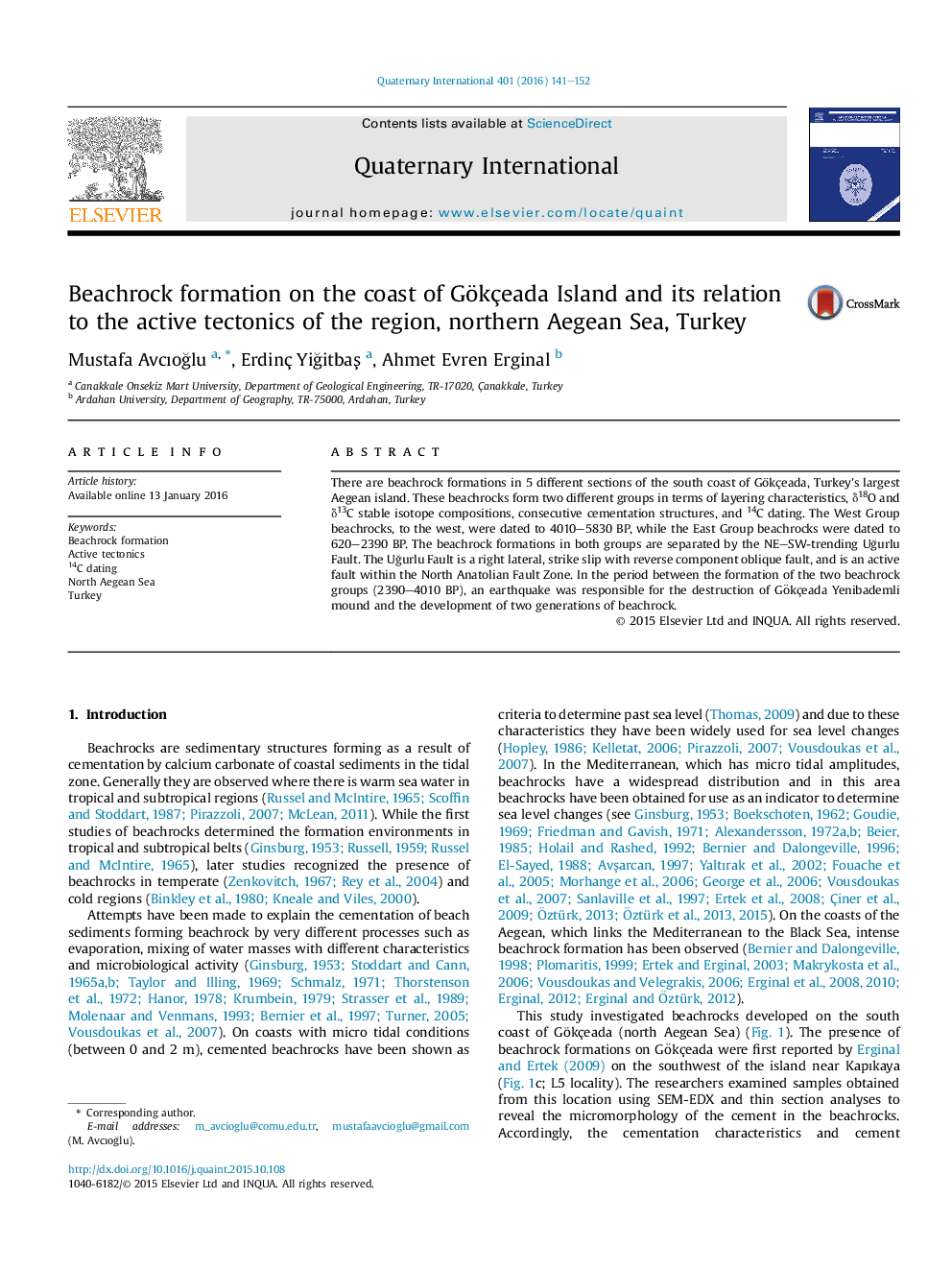| Article ID | Journal | Published Year | Pages | File Type |
|---|---|---|---|---|
| 1040180 | Quaternary International | 2016 | 12 Pages |
There are beachrock formations in 5 different sections of the south coast of Gökçeada, Turkey's largest Aegean island. These beachrocks form two different groups in terms of layering characteristics, δ18O and δ13C stable isotope compositions, consecutive cementation structures, and 14C dating. The West Group beachrocks, to the west, were dated to 4010–5830 BP, while the East Group beachrocks were dated to 620–2390 BP. The beachrock formations in both groups are separated by the NE–SW-trending Uğurlu Fault. The Uğurlu Fault is a right lateral, strike slip with reverse component oblique fault, and is an active fault within the North Anatolian Fault Zone. In the period between the formation of the two beachrock groups (2390–4010 BP), an earthquake was responsible for the destruction of Gökçeada Yenibademli mound and the development of two generations of beachrock.
